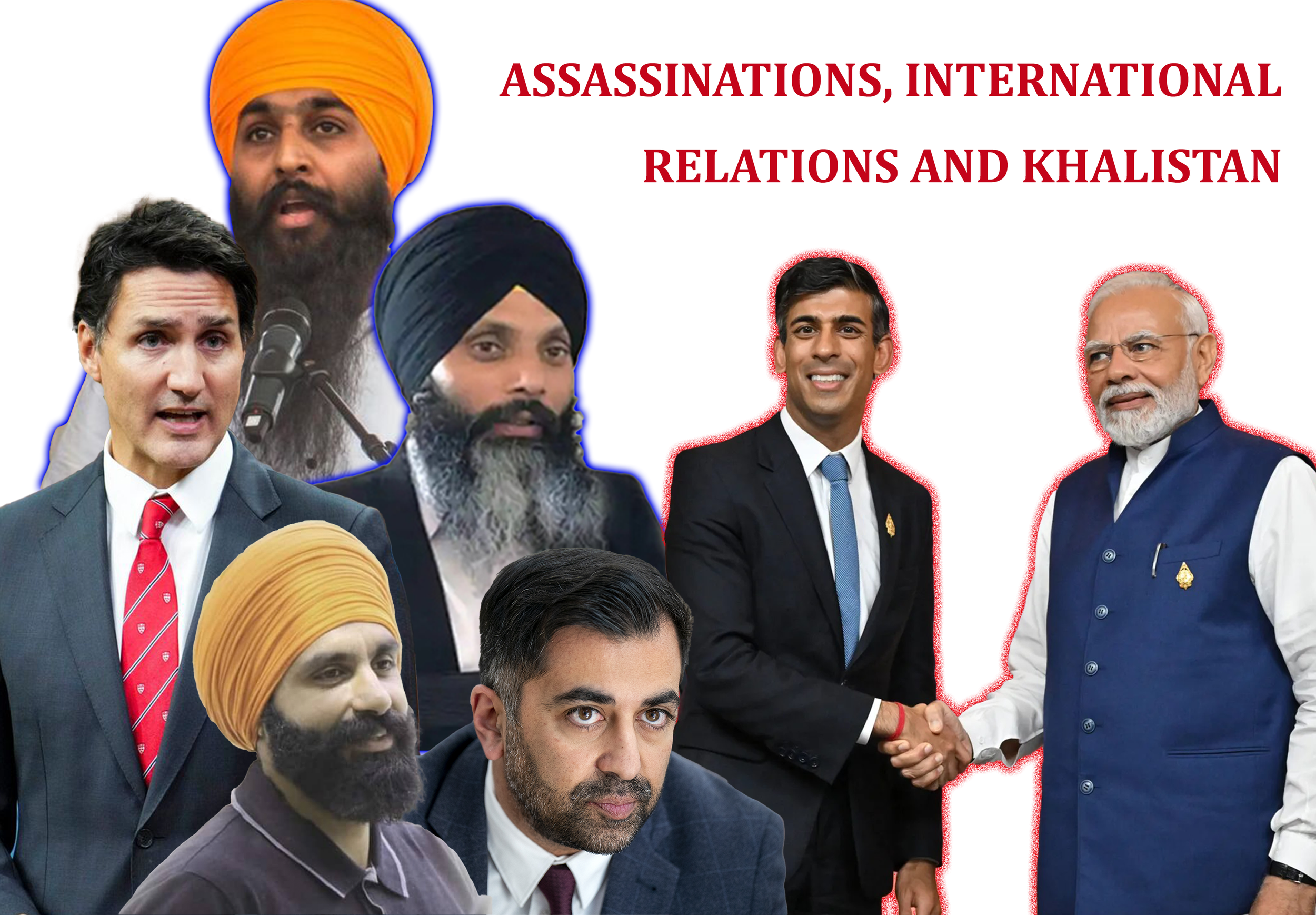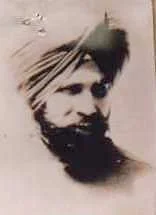Mark Tully: the handmaiden of indian state propaganda
/35 years of highly inflammatory and sensationalised headlines have seen indian media outlets produce false narratives that have sought to malign and misrepresent one of the most revered Sikh leaders of the 20th century.
It was journalist Kuldip Nayar who first alleged that Sant Jarnail Singh was cultivated by the Congress to usurp the Akali Dal. Despite this allegation remaining completely unfounded 40 years on, it has been continually bandied about by a whole array of misinformed writers who churn out the erroneous rhetoric of the indian establishment. Mark Tully is one such writer who has built an entire career out of this.
In Tully’s most recent piece, his intentions are evident from the offset when he states, “Guru Nanak, the man who founded the Sikh religion, is revered as the first of the ten most pious men.” This is Tully laying the framework that later allows him to discredit an entire people’s movement for self-determination – one rooted in the sovereignty founded by Guru Nanak – into “religious fanaticism” that opposes the “model secular democratic” setup of the indian state.
Tully depicts Guru Nanak as a pious and peaceful man, as if these were the only two traits that defined the life of the Great Guru. There is no mention of Guru Sahib’s socio-political mobilisation that saw them challenge oppression and exploitation throughout their life. It was Guru Nanak who first enthused a spirit of defiance within the Sikh world, speaking truth to power wherever they went, which formed an integral part of the Sikh movement under successive Gurus, and the Sikhs.
Tully fails to mention how Guru Nanak was overtly critical of dehumanising power structures across South Asia and the Middle East, which at one stage, even led to Guru Nanak’s incarceration by Mughal authorities. He fails miserably to portray Guru Nanak with any sincerity or accuracy because he seeks to represent Guru Nanak as a passive, law-abiding and peace-loving citizen of the world, who seemingly just prayed all day.
There is of course no mention of the creation of Kartarpur, a town founded on key princess of the Sikh way of life that are rooted within Sikhi itself, which was built as an alternative to Mughal power structures. Successive Gurus built on this foundation of Gursikhi by further developing the Sikh sovereign way of life by building more towns and cities throughout the 16th and 17th centuries, paving the way for the Khalsa Raj under Banda Singh and the Sikh Misla which preceded Ranjit Singh’s consolidation of Panjab in the 19th century.
There is no mention of the Gurbani written by Guru Nanak which empowers the reader to challenge the widespread oppression, falsehood and exploitation of the masses by those holding power. There is no mention of the Guru’s sovereignty that is at the core of Sikhi.
To paraphrase Lenin, this is Tully carefully placing the first marker that allows him to turn Guru Nanak into a harmless icon, to canonise him, and surround his name with a certain halo for the “consolation” of the oppressed classes and with the object of duping the world, while at the same time weakening the real essence of Guru Nanak’s teachings by blunting their revolutionary edge.
Of course, Tully can’t mention Guru Nanak’s social or political activism that led to the creation of Sikh polity, because it would be counterproductive to his aim of depicting the Guru’s Sikhs, such as Sant Jarnail Singh, and movements for Sikh sovereignty, such as the Khalistan movement, as irrational and simply a case of “religious fanaticism”, thus a threat to the “model secular” rule everywhere.
Tully’s tired application of sensationalism, such as Sant Jarnail Singh was “inciting hatred” and “fundamentalism”, is intended to harbour division between the Sikhs and the rest of the India. The suggestion that Sant Jarnail Singh was aligned to the congress party, is an attempt to repress the fact that Sant Jarnail Singh, a Sikh of Guru Nanak, revered by millions of Sikhs around the globe, actually tore down the veil of “indian democracy” in his seven short years as a leader of the Damdami Taksal. This is the same Taksal that produced towering Sikh leaders such as Baba Deep Singh and Baba Gurbaksh Singh, who stood up to oppressive forces in the 18th century giving their lives defending the sovereignty of the Akal Takht – an example which Sant Jarnail Singh himself followed.
Contrary to what Tully writes, Sant Jarnail Singh had no political allegiance to any party within the indian project. In fact, there is documented evidence, in the form of video footage and audio, in which Sant Jarnail Singh condemns the actions of the political, judicial and legislative arms of the indian state because of their anti-Sikh and anti-minority policies that led to the systematic breakup of Panjab’s economic infrastructure, and engulfed the region into a state of submission that lasts until this day. The attacks on Panjabi language, the diversion of river waters, the attack on Sri Darbar Sahib in 1955 and the carving out of two new states were just some of the reasons why Sikhs had previously raised slogans of revolt against the indian project.
Sant Jarnail Singh took those movements and gave them a new lease of life. He applied Gurmat – Guru inspired teachings and actions – which saw a revival of Sikhi in Panjab. His mission was three fold; firstly, to stop the use of drugs and intoxicants that were wreaking havoc on the livelihood of families across Panjab; secondly, disseminate the teachings of Guru Nanak, because a populace that was conscious of Gurbani would help create a better society and through off the yoke of slavery; and thirdly, inspire the populace to take Amrit to uphold these values as Sikhs of the Guru, so that they could help other oppressed classes.
It is clear from his speeches that Sant Jarnail Singh was working for the betterment and upliftment of all peoples of Panjab, with a focus on highlighting the repressive nature of anti-Sikh policies imposed by the indian elites. Awakening the masses to the shackles of repressive indian policies was a fundamental part of the movement that Sant Jarnail Singh spearheaded, and he remained defiant in his position right up until his martyrdom when the indian state bombarded the Akal Takht.
Tully believes in the religious-secular binary and this is evident in his concluding line. For him Sikhi is just a religion, and he maintains that religion cannot co-exist with politics. Tully cannot comprehend the magnificence of Gurmat, MiriPiri, nor does he understand the significance of the Khalsa Panth and what Sikhi is in relation to Guru Granth Guru Panth.
What Tully fails to see is that the model of governance espoused by Guru Nanak, exists outside of the western, Eurocentric systems. Sikh scholars such as Rattan Singh Bhangoo have recorded that during the Sikh Rule of Ranjit Singh, the British had made enquiries into the roots of Sikh sovereignty. In his voluminous work Gur Panth Prakash, Bhangoo details the questioning from British officers and documents their inability to comprehend that Guru Nanak was directly bestowed with sovereignty from Akaal Purakh, that they are Sache Patshah (the True Sovereign).
Whether one assumes western thinkers and power brokers were unable to fathom the way of the Great Gurus, or they fully understood but deemed Sikhi a threat to their own occupation over Panjab, the fact remains that it was those foreign invaders that coined the term “Sikhism” which set about the imposition of the rigorous constraints of western ideas of religiosity.
This limited and violent interpretation of “Sikhism” went against what Sikhi is, but as occupiers of the land it allowed them to publish literature that redefined Sikhi through their own oppressive projections of the world. When Christian missionaries working under the British Empire sought to translate the writings of the Gurus, they too were guilty of reframing Sikhi through an Abrahamic lens, the adverse effects of which continue today.
Much like those early colonisers in Panjab, Tully has attempted to violently dissect Sikhi from those Sikhs that walked the Way of the Guru – like Sant Jarnail Singh and the martyrs of the Khalistan Sanghrash – to assert Sikh sovereignty. One can only conclude that he is either blinded by his own ego, unable to fathom a different worldview, or he’s strategically following in the footsteps of those who understood full well the ramifications of an informed Sikh, loyal to no other but the sovereignty of Guru Granth Guru Panth, and is desperately seeking to malign and vilify any such form of sovereign Sikh mobilisation.
In Tully’s latest article, it is his horrendous portrayal of Guru Nanak, as a mere religious figure, that serves as a catalyst to the scathing attack he launches against Sant Jarnail Singh and the Khalistan Sanghrash. He effortlessly regurgitates lies built on decades of anti-Sikh propaganda, that he himself helped cement in the 1980s and 1990s. Tully will no doubt continue to spew his warped understanding of Panjab, Sikhi and Guru Nanak. As always it is up to the Guru’s beloved, as informed members of the Khalsa Panth, to stand for the truth, which in this age of falsehood becomes the first act of revolution.
Khalistan Zindabad




